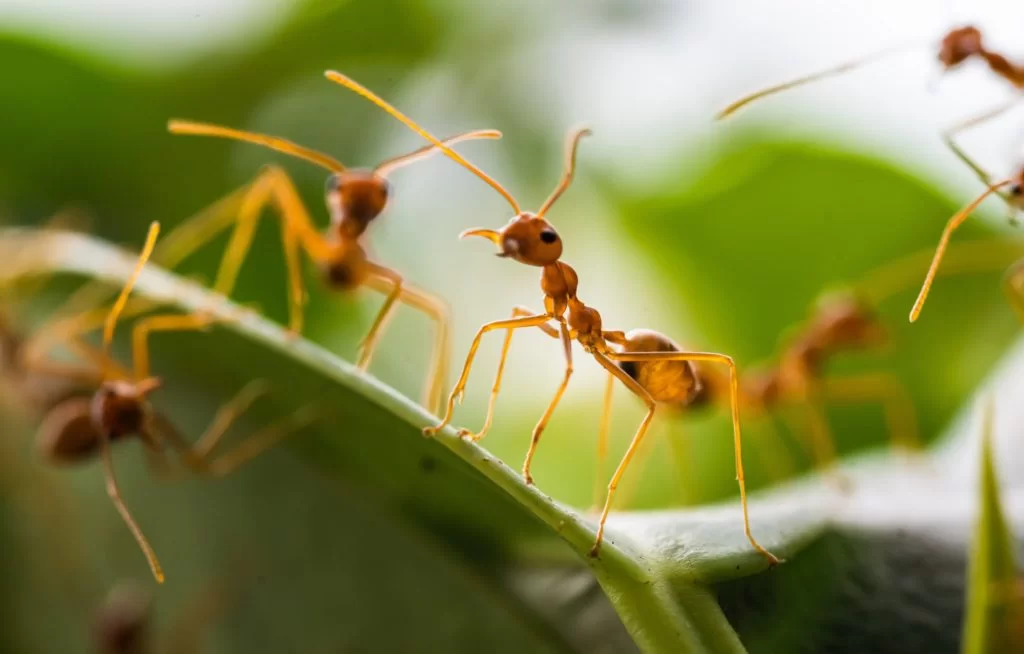Introduction: A Brief Overview
Termites, regularly appeared as pesky pests, honestly possess an intricately fascinating world that often goes omitted by way of the informal observer. These tiny insects, frequently unsuitable for ants due to their similar length and social structure, play a important function within the atmosphere. From their wonderful architectural feats to their elaborate social hierarchies, termites have intrigued scientists and fascinated nature lovers for centuries. In this article, we delve into the captivating global of termites, exploring their biology, conduct, ecological importance, and the challenges they pose to human structures.
1. Anatomy and Biology: Unveiling Nature’s Engineers
Termites belong to the order Isopteran, which derives from Greek, meaning “identical-winged.” Despite their small length, those insects showcase amazing range in morphology and conduct. Their anatomy is finely tuned for his or her ecological area of interest, with gentle our bodies, immediately antennae, and chewing mouthparts tailored for their wooden-eating behavior. Unlike ants, termites undergo incomplete metamorphosis, progressing from eggs to nymphs and sooner or later to adults with out present process a pupal degree. This unique existence cycle contributes to their resilience and flexibility in diverse environments.
2. Social Structure: The Hive Mind Unraveled
One of the most intriguing aspects of termites is their fairly prepared social shape, harking back to ants and bees. Termite colonies consist of various castes, every with precise roles and responsibilities. At the heart of the colony lies the queen, the sole reproductive man or woman, whose primary function is to put eggs and make sure the colony’s survival. Workers, the maximum numerous castes, are chargeable for foraging, building and maintaining the nest, and being concerned for the young. Soldiers, equipped with bold mandibles or chemical defenses, shield the colony from predators and invaders. This division of labor ensures the efficient functioning of the termite society, permitting them to thrive in various habitats worldwide.
3. Architectural Marvels: The Construction of Termite Mounds
One of the maximum top-notch feats of termites is the construction of tricky mounds, which serve as their colonies. These mounds range in size and form relying on the termite species and environmental conditions. Constructed broadly speaking from a aggregate of soil, saliva, and fecal be counted, termite mounds exhibit sophisticated ventilation structures, temperature law mechanisms, and complicated tunnel networks. The mound’s architecture allows air flow, regulates humidity tiers, and affords safety towards predators and damaging climate conditions. Researchers continue to look at termite mounds for insights into sustainable building practices and climate manipulate mechanisms.
4. Ecological Significance: Termites as Ecosystem Engineers
Despite their reputation as detrimental pests, termites play a crucial role in keeping surroundings balance and nutrient biking. Their capacity to decompose plant count number, in particular cellulose-wealthy substances like wooden, facilitates the recycling of nutrients lower back into the soil. In tropical rainforests, termites boost up the decomposition process, contributing to soil fertility and supporting plant increase. Furthermore, termite sports aerate the soil, improving water infiltration and promoting root growth. In savannas and grasslands, termite mounds create microhabitats for different organisms, fostering biodiversity and ecosystem resilience.
5. Human Interaction: Challenges and Solutions
While termites provide precious ecological services, they also pose massive demanding situations to human sports, specially in agriculture and urban regions. Termites are notorious for infesting wooden structures, inflicting sizeable damage to buildings, furnishings, and agricultural vegetation. Controlling termite populations frequently involves the use of chemical pesticides, which boost worries approximately environmental pollutants and health dangers. However, opportunity techniques consisting of organic manipulate, habitat change, and termite-resistant constructing substances offer sustainable answers to mitigate termite harm whilst minimizing environmental effect.
6. Future Perspectives: Harnessing Nature’s Wisdom
As we hold to resolve the mysteries of the termite global, there may be growing hobby in harnessing their particular abilities for various programs. Researchers are exploring bio-inspired technology based on termite behavior and structure, which includes self-regulating homes, efficient air flow structures, and soil stabilization methods. By reading termite ecology and behavior, we are able to gain valuable insights into sustainable useful resource control, climate resilience, and biomimetic layout. As we strive to cope with pressing environmental challenges, perhaps the tiny architects of the termite international can offer us beneficial classes in coexistence and variation.
Conclusion: Appreciating Nature’s Tiny Wonders
In conclusion, termites exemplify the intricate splendor and complexity of the herbal world. Beyond their reputation as pests, these tiny insects function environment engineers, architects, and social organisms, playing critical roles in ecological procedures. By understanding and respecting the unique contributions of termites, we are able to foster extra concord between human sports and the surroundings. As we navigate a technology of environmental uncertainty, let us surprise on the ingenuity of nature’s smallest inhabitants and strive to coexist with them in a spirit of mutual appreciate and appreciation.


